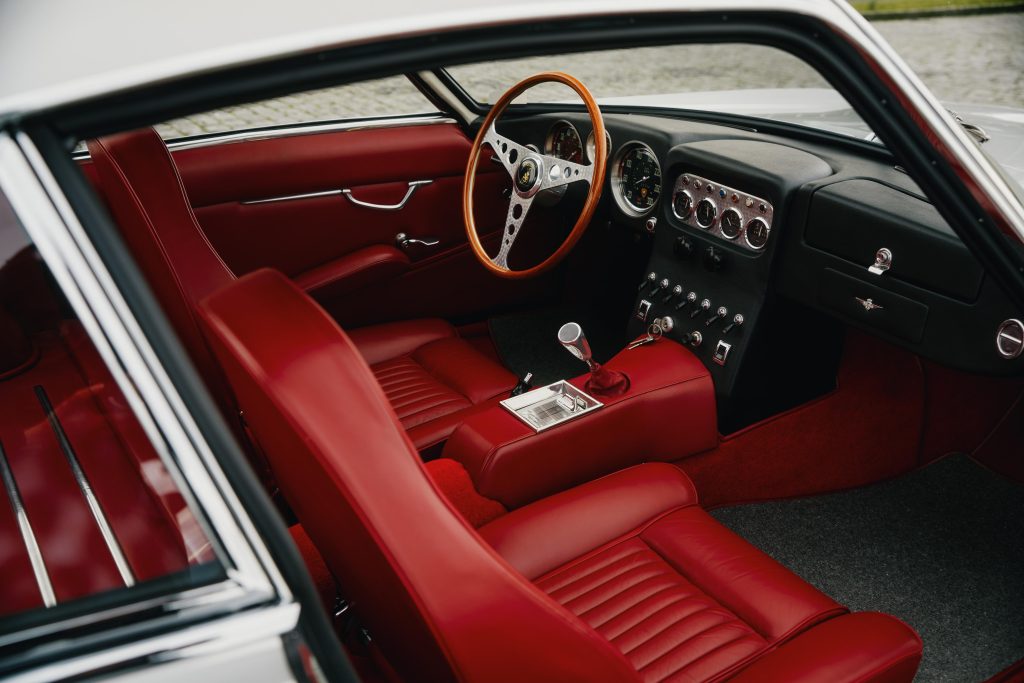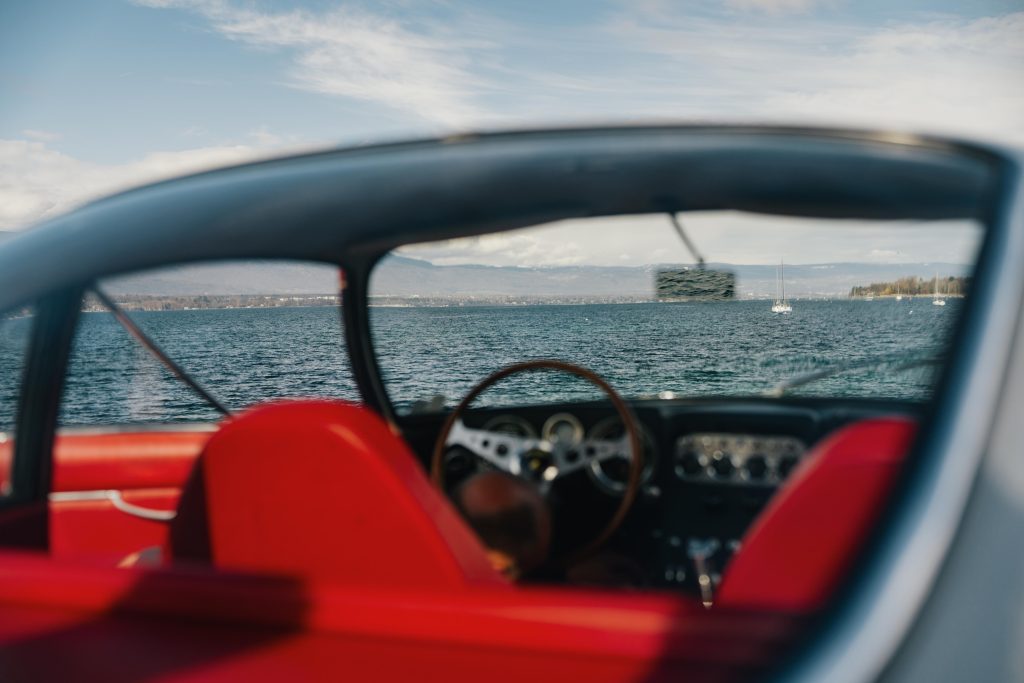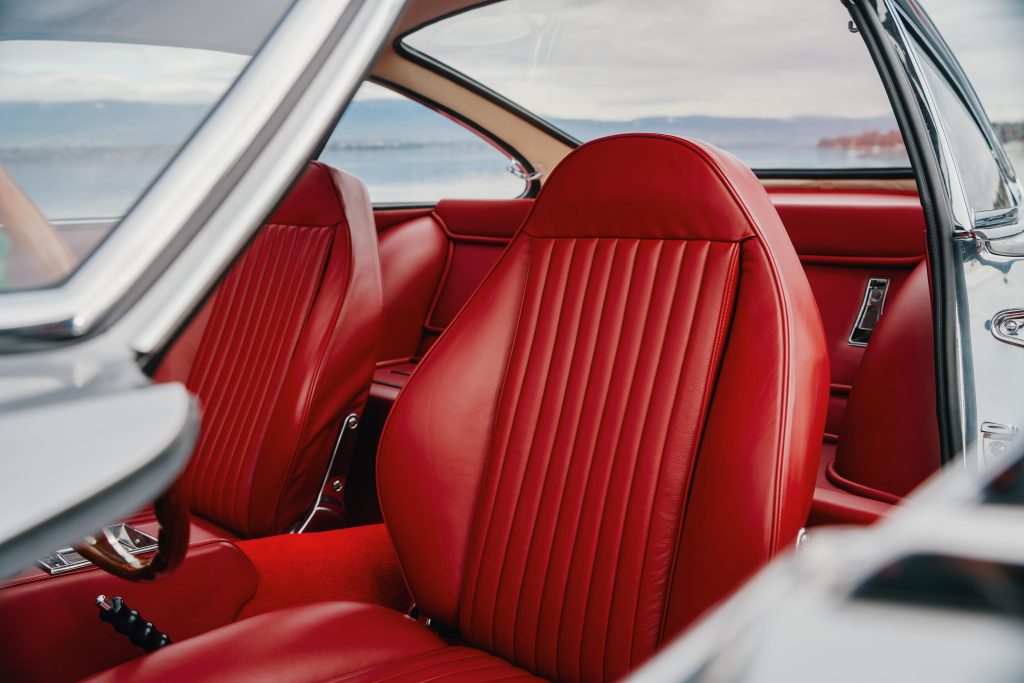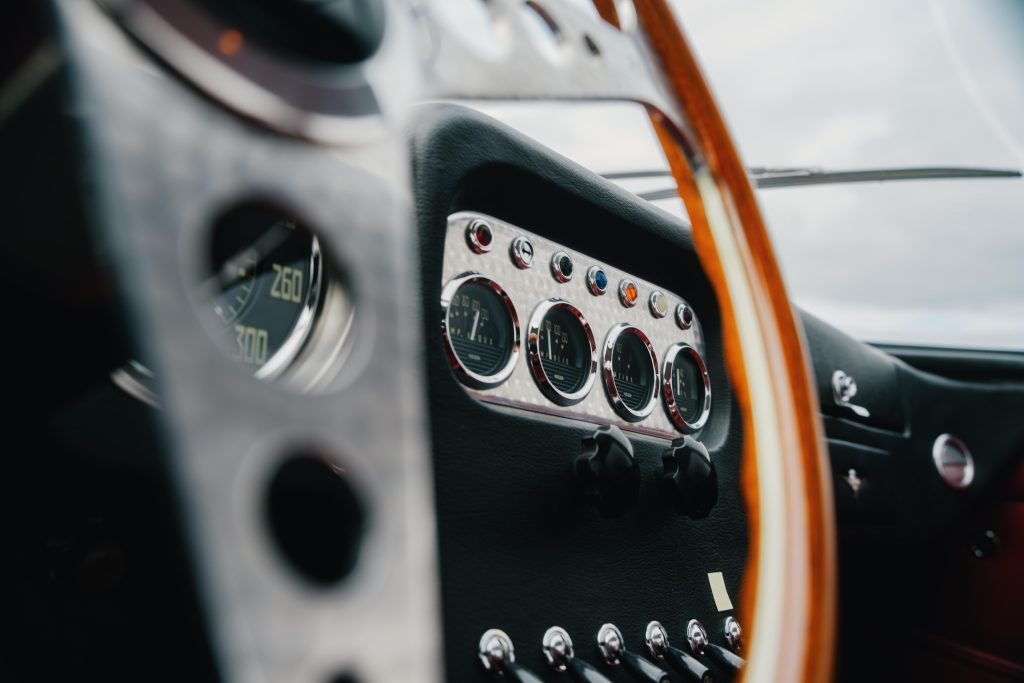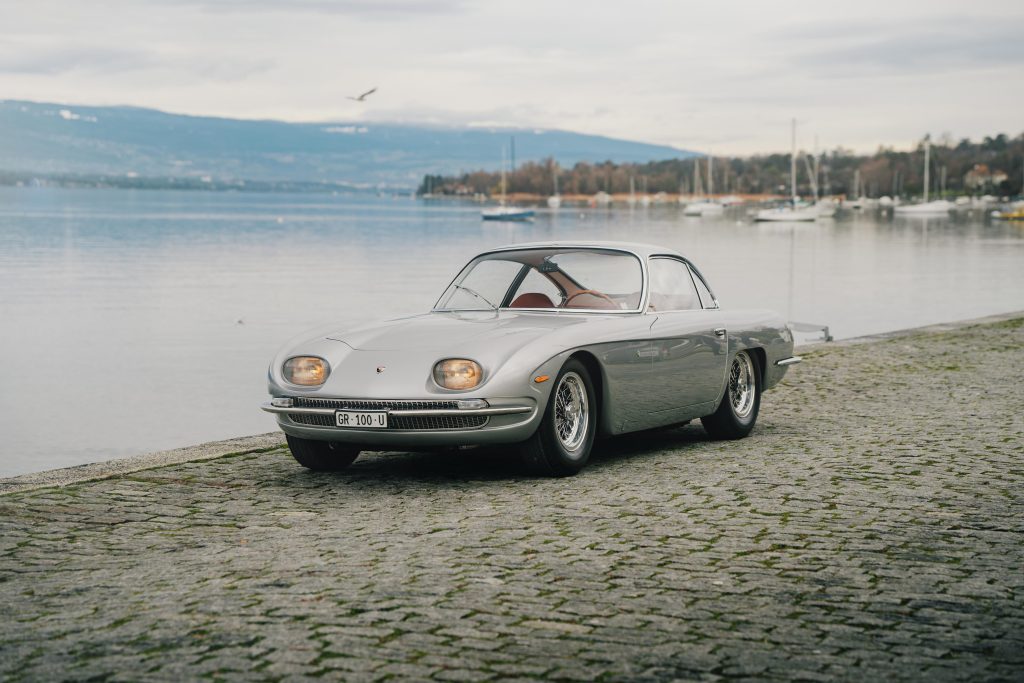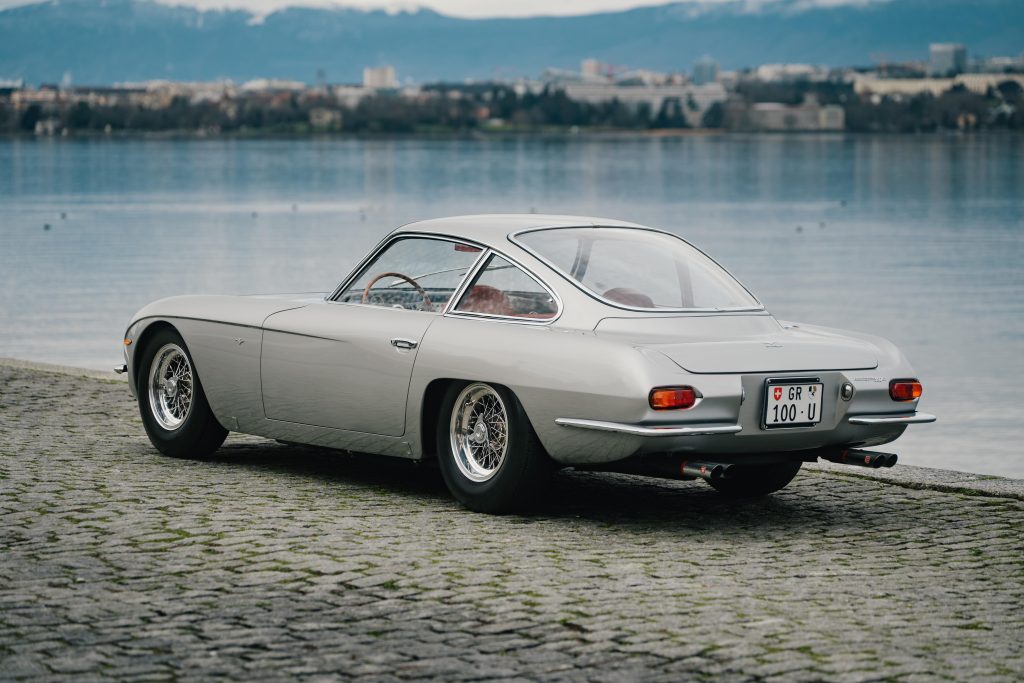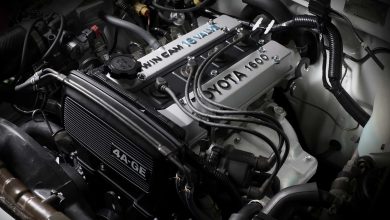Lamborghini 350 GT Returns To Geneva For Its 60th Birthday

Lamborghini celebrates its first production model by taking it back to the city where it was unveiled in 1964.
Way back in March 1964, the still-infant Lamborghini presented its first-ever production car, the 350 GT, at the Geneva Motor Show that year. And now six decades down the line, the Italian supercar marque is back in the Swiss city again with that very same model, parading its second chassis number around the streets to mark the 60th birthday this premiere raging bull.
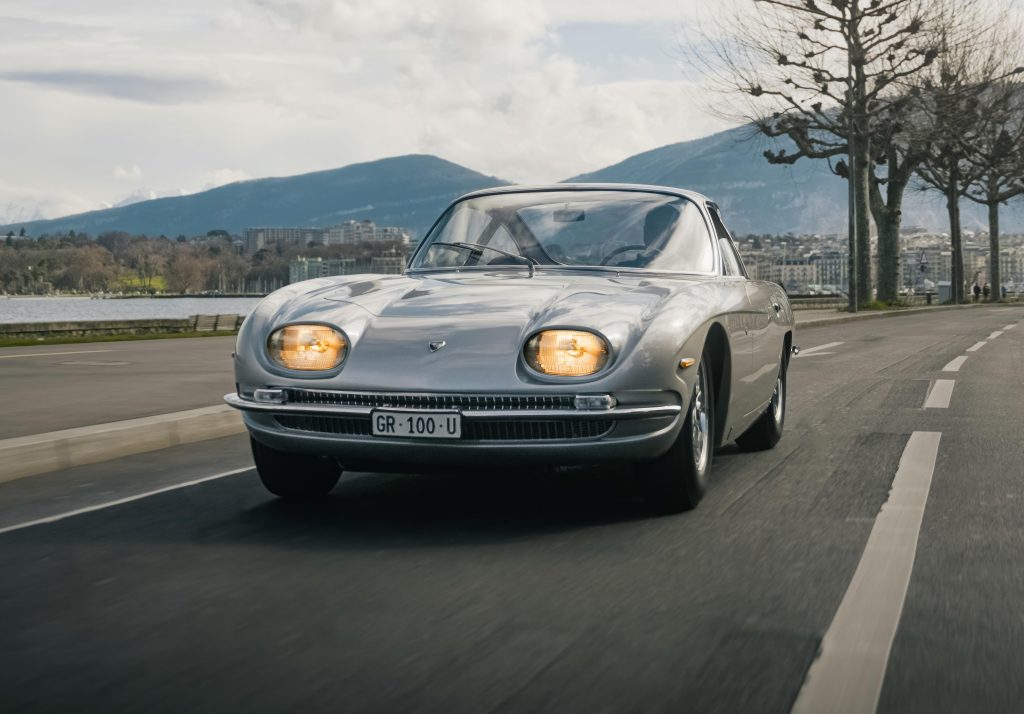
Lamborghini’s commercial story started on its stand at the 1964 Geneva Motor show, with the public presentation of the 350 GT. Established only just a few months previously, this premiere production raging bull was derived from the one-off 350 GTV designed by Franco Scaglione and built at Carrozzeria Sargiotto in Turin.
The first production model made by Lamborghini was an immediate hit and caught the attention of much of the media present in Geneva at the time. The aluminium bodywork design and its production was carried out by Carrozzeria Touring in Milan, which in the early 1960s was considered the absolute best in being able to deliver sports cars with a luxury finish. The interior of the 350 GT meanwhile were of the highest level, with widespread use of leather and chrome plating, and characterised by a 2+1 configuration, with two front seats and a one central rear seat.

Apart from the design though, the engineering under its pretty body was similarly striking. Right from its conception, the 350 GT was fast and extraordinary at the same time. The chassis and frame were the result of the work of engineer Giampaolo Dallara, very young at the time and now considered the best chassis maker in the world. The 3.5-litre quad-cam V12 meanwhile was the brainchild of engineer Giotto Bizzarrini, who envisaged it for competitive use, and was adapted for road use on the 350 GT by engineer Paolo Stanzani, a key figure in the history of Lamborghini and GT cars around the world.

Its engine captivated every visitor to the stand, where Ferruccio Lamborghini himself showed off the car to onlookers, future customers and journalists. As confirmation of its qualities, the Lamborghini V12 was taken to 4-litres just a few months later on the 400 GT, and in this new configuration it would become the cornerstone of Lamborghini’s success.

For the next 40 years, the same geometry would be used in various positions and variations, and would become one of the key symbols of Lamborghini’s DNA. Indeed, this engine would be used in a front longitudinal position on the 400 GT, Islero, Jarama, Espada and LM002, in a rear transverse position on the Miura, and in a rear longitudinal position on the Countach and Diablo.

The car exhibited at the Lamborghini stand at Geneva 1964 was the 350 GT chassis #101, Metallic Geneva Green in colour with white interior, the first ever produced. The car, later used as a test model for development and endurance tests, was unfortunately destroyed by a rear-end collision while stopped at traffic lights.
However, the very next 350 GT, with the second chassis number, did survive. Metallic grey in colour with a red interior, this particular bull was despatched from Sant’Agata Bolognese on 15 August 1964, and delivered brand new to Geneva.
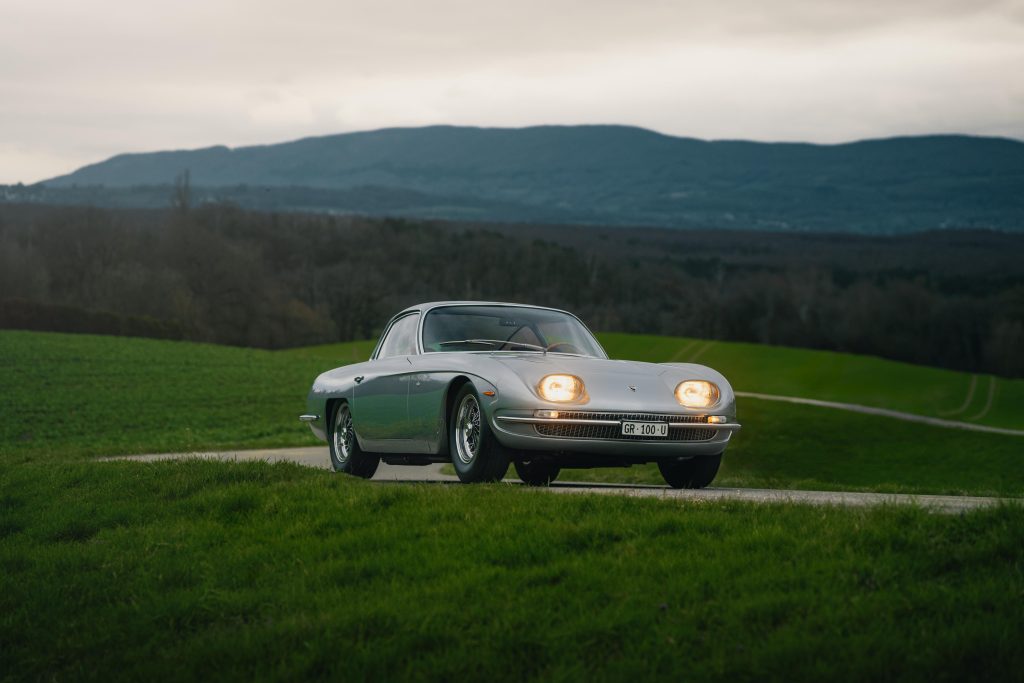
Lamborghini’s first 350 GT was delivered to Livorno-born drummer Giampiero Giusti, who was at the height of his success with the band “I 5 di Lucca”, which later became the “Quartetto di Lucca”, considered one of the most important jazz ensembles in Italy. The 350 GT took on a starring role in the 1967 Columbia Pictures film “Kill Me Quick, I’m Cold”, directed by Francesco Maselli, where it was driven by the leading couple, Monica Vitti and Jean Sorel.
This very same car is now the oldest existing Lamborghini production car, perfectly restored and certified by Lamborghini Polo Storico. This year, the Sant’Agata Bolognese automaker wanted to celebrate this very story, bringing it back to life and in top form on the streets of Geneva, the city where it was first delivered and presented six decades years ago.
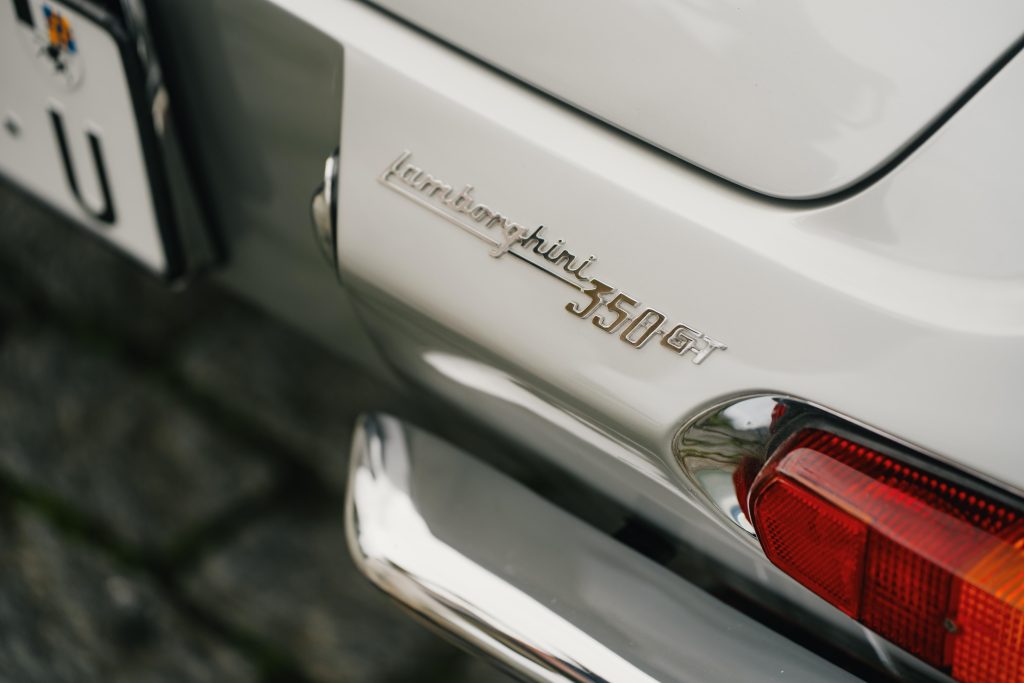
Lamborghini 350 GT Data Sheet (1964-1965)
- Engine Type: L351, 12 V-cylinders at 60°
- Position: Front longitudinal
- Bore and stroke: 77×62 mm
- Displacement: 3464 cc
- Maximum power: 320 CV at 7000 rpm
- Distribution: 2 valves per cylinder, double overhead camshaft, chain driven
- Fuel system: 6 Weber 40 DCOE twin carburettors
- Lubrication: wet sump
- Transmission: 5-speed ZF + R
- Chassis: Tubular
- Suspension: 4-wheel independent suspension, coil springs, telescopic dampers
- Brakes: 4-wheel disc brake system
- Electrical equipment: 12V
- Wheelbase: 2550 mm
- Track: 1380 mm Front and Rear
- Dimensions L x Wx H mm: 4470 x 1720 x 1220
- Weight: 1100 kg
- Tires: Pirelli 205/15
- Units produced: 135

